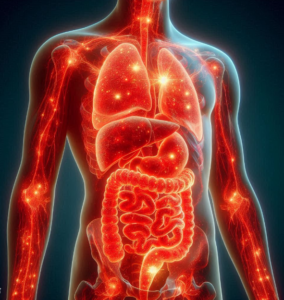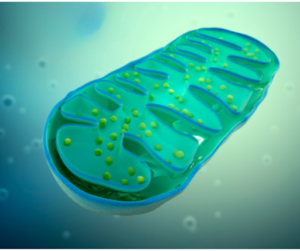Because of the possible health advantages, fasting has become more popular, especially intermittent fasting (IF). Intermittent fasting is a weight management programme that promotes metabolic health, insulin sensitivity, and improved eating habits by alternating between eating and fasting intervals. Read on to learn about the several IF approaches, why they work, and how to include them in your daily routine.
In intermittent fasting, you alternate between eating and not eating for specific amounts. When you eat (IF) is more important than what you consume (conventional diets). This diet plan can aid in weight loss, metabolic health, and possibly life extension. Many people looking for a long-term solution to their health and wellness problems highly favour intermittent fasting due to its simplicity and adaptability.
Popular Intermittent Fasting Methods
Time-Restricted Eating (TRE)
In time-restricted eating (TRE), you synchronise your eating schedule with your body's natural circadian rhythm and fast for several hours daily. This method's flexibility can gradually accommodate individual tastes and goals. You may adopt TRE into your lifestyle by beginning with a more manageable fasting window and progressively expanding the fasting time.
Starting with a 12-Hour Fast/12-Hour Eating Window
If you're just starting out with this eating plan, I advise starting with a 12-hour fast and then a 12-hour eating window. For this method to work, you must fast for 12 hours, most of which you'll be asleep. After that, you'll have food for the next twelve hours.
For example, in 12-hour fasting, suppose you eat your last meal at 7 p.m. and then don't eat again until 7 a.m. This slight change can help your body acclimatise to fasting without drastically altering your daily routine, as it coincides with your regular mealtimes. The first fasting method is advantageous since it acclimates your body to going longer without food. Additionally, allowing yourself a few hours to pass after eating can help with digestion. Remember that you should not eat unhealthy snacks in the middle of the night, a common cause of weight gain.
Progressing to a 14-Hour Fast/10-Hour Eating Window
Once you've adjusted to a 12-hour fasting window and a 10-hour eating window for a few weeks, you can increase the fasting time to 14 hours. As an alternative to eating every 12 hours, you shorten that time to 10 to 15 hours. Then, you won't eat again until 9 in the morning, following your evening meal at 7 o'clock. In addition to reducing the likelihood of mindless nibbling, this little extension keeps your body trained to use stored energy between meals. If you have to be out and about all day for work, you might find having dinner around 6 p.m. and breakfast at 8 a.m. more manageable.
A 14-hour fast can amplify the metabolic advantages of fasting, including increased insulin sensitivity and better fat burning. Beginners may find that a 14-hour fast is more doable and manageable to stick to in the long run than longer fasting durations. Natural eating and sleeping schedules are also well-aligned with this.
Moving to a 16-Hour Fast/8-Hour Eating Window (16/8 Method)
After you're used to fasting for 14 hours, you can go on to the more common 16/8 schedule. This necessitates a 16-hour fast and then 8 hours of food consumption.
If you have supper at 7 o'clock every night, you won't have anything to eat until 11 a.m. Because it usually just requires foregoing breakfast and eating lunch and supper within the 8-hour window, many individuals find this strategy straightforward and convenient.
In addition to promoting weight reduction, improving metabolic health, and increasing fat-burning, the 16/8 eating plan helps save calories by restricting eating hours. For many people, the 16/8 intermittent fasting technique is the most practical and easy to incorporate into their everyday lives. Many individuals find it a sensible decision since it helps them maintain consistent energy levels and mental clarity throughout the day.
 Advancing to an 18-Hour Fast/6-Hour Eating Window
Advancing to an 18-Hour Fast/6-Hour Eating Window
After getting the 16/8 approach down pat, you may want to experiment with more extended fasting periods, either regularly or for the long haul. The next stage, which may provide more significant and noticeable advantages, is lengthening the fasting period to 18 hours while maintaining a 6-hour feeding window. This is because fasting directly correlates with fat loss; the longer the fasting state persists, the more energy the body gets from fat. Prolonged fasting periods, which extend the times of lipolysis and ketogenesis, improve the body's capacity to use stored fat as fuel for energy.
Skipping breakfast is also part of this fasting regimen, but having supper at 7 p.m. the night before allows you to have lunch at 1 p.m. As a result, the body is forced to use its fat stores for energy more often. Along with promoting fat loss, improving insulin sensitivity, and inducing autophagy (the body's process of removing damaged cells), an 18-hour fast has other benefits.
20-Hour Fast/4-Hour Eating Window
For individuals seeking a more rigorous fasting programme, the 4-hour window limits food to only four hours daily, leading to a 20-hour fast. This one can boost insulin sensitivity and fat burning even more than shorter fasting durations. The day's first meal is now pushed back to 3 p.m. Extending the duration of fasting allows your body to make the most of the fasting state, which improves metabolic health, fat burning, and, who knows, maybe even your mental clarity and attention. The health advantages of a longer fasting routine should be considered in addition to the inconvenience and difficulty of adhering to it.
Alternate-day Fasting
Fasting for one day and eating normally the next day is known as alternate-day fasting. No calories are consumed on full-fast days since you don't eat anything at all. As a result, your body can achieve a more profound fasting condition. In terms of long-term viability, it enhances autophagy and fat burning, and all you have to do is keep telling yourself that tomorrow you'll have food again. Oh, come on! Just one day!
 One Meal a Day (OMAD)
One Meal a Day (OMAD)
The one-meal-a-day (OMAD) fasting strategy is the last option; it calls for a 23-hour fast and often requires eating within a one-hour window. Because of the extended duration of fasting, this approach can quickly reduce weight and significantly enhance metabolism. It lessens the need to snack during the day and makes meal planning easier. There is some evidence that the lengthy fasting phase may have anti-ageing effects.
If you're starting, you should know that OMAD maintenance may be a real pain. You should ease into this type of fasting by doing it occasionally, perhaps once a month. Making the most of your one meal a day by eating nutrient-dense whole foods can help you maintain your energy levels and get a wide range of vitamins, minerals, and other nutrients your body needs.
5:2 Diet
The 5:2 Diet is a popular and realistic eating plan that does not include fasting. The plan calls for five days of normal eating and two days of severely limited caloric intake (500–600 calories). This method is adaptable, so you may fast on any day of the week that works best for you. Even without the intensity of prolonged fasts, the modest calorie restriction on fasting days can still offer substantial health advantages.
Also, unlike stringent fasting approaches, the 5:2 Diet is more straightforward to stick to over the long haul. With this plan, you may still reap the benefits of intermittent fasting while enjoying social meals on most days. Pick two days when you don't have to worry about following a rigorous schedule and chill out. Those are the days you should fast. If you want to make it even more convenient and doable, pick different days instead of consecutive ones.
Extended Fasts
Fasting for 36, 48, or 72 hours can achieve additional health advantages, such as increased autophagy, higher insulin sensitivity, and markedly reduced inflammation. However, exercising caution and, preferably, seeking medical guidance when engaging in protracted fasting is essential.
Tips for Success
 Stay Hydrated
Stay Hydrated
Hydration regulates appetite, keeps your metabolism going, and keeps all your basic systems running well when fasting. You may go weeks without eating, but you won't make it more than a few days without water.
Water, herbal teas, and black coffee are great ways to stay hydrated. Avoiding sugary or “diet” drinks that include artificial sweeteners can disrupt your fast and lead to insulin spikes. Keeping a water bottle on hand might be a constant reminder to sip water as you go about your day. Another option is to season the water with a pinch of Himalayan salt. Especially during lengthy fasts, this can help replace electrolytes.
Eat Nutrient-Dense Foods
Eating a diet rich in nutrient-dense whole foods is the simplest way to get all the vitamins, minerals, and macronutrients your body needs to function correctly and be healthy.
Include more whole foods in your Diet, such as fruits, quinoa, brown rice, beans, lentils, and salad greens; lean meats, poultry, and seafood; grains, nuts, seeds, and avocados; and lean proteins, such as tofu, quinoa, and brown rice.
Meal planning and preparation in advance are terrific pieces of advice. Because of this, it is easier to resist the urge to eat bad food. Eat a rainbow of fruits and vegetables to receive your body's nutrients. Preparing in bulk is another way to save time and not worry about what to eat daily.
Listen to Your Body
Please pay close attention to your body's reactions during fasting; it will help you stay on track. Doing so may ensure that your strategy is durable and adaptable to your specific demands. Take note of any symptoms of exhaustion, irritability, or vertigo you may have before, during, or after a fasting period.
You can monitor this by recording your energy levels, mood swings, and physical complaints in a notebook. You can use this to identify trends and tweak them as needed.
Start Gradually
Although it's tempting to go “all in” right away, cutting back on fasting for a while is a good idea. Starting slowly and steadily may lessen the likelihood of unpleasant side effects and help your body adjust to fasting. Work your way up to 14/10, 16/8, etc., by starting with 12/12 (12 hours of fasting and 12 hours of eating).
One possible approach to easing into the procedure is to begin with the 5:2 strategy. A gradual approach also benefits spotting and fixing problems early.
Avoid Overeating
If you are trying to reduce weight or increase insulin sensitivity, overeating during the eating window might ruin your progress. Eat slowly, watch your portions, and pay attention when hungry. Instead of eating big, calorie-dense meals, go for smaller, more balanced ones. Using smaller plates could help with portion control. Protein- and fibre-rich meals should be your top priorities since they help you feel full longer and reduce your food intake.
 Stay Active
Stay Active
The weight loss and better metabolic health effects of IF can be amplified with regular physical exercise.
Incorporate strength training and cardiovascular activities into your programme, and modify the intensity of your workouts according to your mood and level of fitness. Cardiovascular activity while fasting (i.e., without food) might enhance fat oxidation. But pay attention to how you feel so you don't hurt yourself.
Stay Consistent
Consistency is paramount to experiencing the advantages of intermittent fasting. With regular practice, your body learns to adapt and optimise its metabolic processes. Pick a fasting regimen that works for you and can be maintained over time. To make it simpler and more consistent, it's a good idea to set reminders or use applications to track fasting times and eating windows.
If you follow these guidelines and gradually add intermittent fasting, you can get the most out of it for your health and make it a sustainable part of your routine.
Health Benefits
Improved Insulin Sensitivity and Reduced Insulin Resistance
Improvements in insulin sensitivity are among the most notable advantages of intermittent fasting (IF). Because insulin sensitivity is necessary for efficient glucose (sugar) utilisation, its development is paramount. Understanding the processes underlying the benefits of intermittent fasting for metabolic health can help us better understand the benefits.
Understanding Insulin and Insulin Sensitivity
The pancreas sends the hormone insulin into circulation. It allows cells to use glucose for energy or store it as glycogen in the liver and muscles.
The cells' sensitivity to insulin's effects is called insulin sensitivity. With appropriate insulin sensitivity, cells efficiently take glucose from the bloodstream because insulin triggers a rapid cell response.
This condition, known as insulin resistance, occurs when cells stop responding to insulin. Consequently, more insulin is required to maintain normal blood glucose levels. This can increase the body's need for insulin, which in turn raises blood sugar levels and puts people at risk of developing type 2 diabetes.
How Intermittent Fasting Improves Insulin Sensitivity
Reduction in Insulin Levels
Insulin levels naturally drop during fasting periods due to the absence of food intake, which triggers the creation of this hormone that stores fat. As insulin levels drop, the body shifts its energy metabolism away from glucose and towards fat storage.
Lower insulin levels decrease the risk of insulin resistance and type 2 diabetes. Insulin resistance occurs when cells have insulin receptors that become desensitized to its effects, which is commonly produced by regularly consuming many carbohydrate-rich meals.
Enhancement of Insulin Receptor Function
The insulin receptors on the surface of cells can reset and become more responsive to the hormone during fasting, increasing their effectiveness. Because of this, the pancreas does not have to work as hard to control blood glucose levels, and the likelihood of insulin resistance decreases.
Reduction in Visceral Fat
Fasting is an excellent place to start if you want to burn more fat for energy. Insulin resistance develops when visceral fat is abundant—fat that surrounds internal organs. Intermittent fasting aids in inflammation reduction and insulin sensitivity improvement by decreasing visceral fat. The highly active visceral fat releases inflammatory chemicals. When inflammation reduces insulin's effectiveness, blood sugar levels become more challenging to manage.
Improvement in Autophagy and Cellular Repair
Fasting triggers autophagy, in which cells remove and recycle damaged components. Improving insulin receptor performance is one of many benefits of this cellular housekeeping that enhances longevity, protects against viruses, cancer, and other diseases, and lowers harmful oxidative stress.
Impact on Hormonal Regulation
Intermittent fasting impacts the metabolism-regulating hormones adiponectin, ghrelin, and leptin. Leptin aids in regulating hunger, energy balance, and fat storage; adiponectin enhances insulin sensitivity; and ghrelin regulates appetite. By optimising the levels of these hormones, intermittent fasting improves insulin sensitivity, glucose metabolism, and fat utilisation efficiency while decreasing appetite. Preventing metabolic diseases and keeping a healthy weight depend on this hormonal balance.
 Decrease in Inflammation
Decrease in Inflammation
Chronic inflammation is one of the leading causes of insulin resistance and excess weight gain. The pro-inflammatory chemicals called cytokines and oxidative stress decrease during fasting, lowering inflammation and lessening its detrimental impact on metabolic functioning.
When inflammation levels are lower, insulin sensitivity, cardiovascular health, and the risk of chronic illnesses, including metabolic syndrome, type 2 diabetes, and certain malignancies, improve.
Enhanced Metabolic Health through Intermittent Fasting
Evidence suggests that IF improves metabolic health in several ways, including weight loss, reduced hypertension and cholesterol levels, and optimising several metabolic processes. Learning how IF affects these aspects may provide a complete picture of its benefits.
How Intermittent Fasting Improves Metabolic Health
Promotion of Fat Loss
As glycogen levels are depleted during fasting, the body begins to burn fat for energy. The breakdown of stored triglycerides into free fatty acids and glycerol is called lipolysis, which the body uses for energy. Intermittent fasting can reduce the risk of metabolic disorders by increasing fat reduction, particularly visceral fat surrounding the organs. Among them are cardiovascular disease and type 2 diabetes.
Visceral fat is hazardous because it is metabolically active and contributes to insulin resistance and inflammation. A fortunate byproduct of low glucose levels is the breakdown and use of this particular type of fat for energy.
Reduction in High Blood Pressure
Although the exact process is unknown, intermittent fasting has been shown to reduce blood pressure. When blood pressure is lowered, the strain on the heart and the walls of the arteries is alleviated. This helps decrease the danger of hypertension-related problems such as renal damage, heart disease, and stroke. Better vascular health benefits the cardiovascular system as a whole.
Improvement in Cholesterol Levels
The metabolic effects of fasting on lipids include increased HDL cholesterol and decreased LDL cholesterol and triglycerides. Fasting improves lipid profiles because the body consumes fat stores for energy.
When cholesterol levels are improved, the risk of atherosclerosis, or the hardening of the arteries, which may cause heart attacks and strokes, is reduced. Improving cardiovascular health outcomes is another benefit of a healthy lipid profile.
 Boosted Metabolism
Boosted Metabolism
Norepinephrine, or noradrenaline, is a hormone that speeds up metabolism by promoting the breakdown of fat; its synthesis rises while fasting. Fasting can also accelerate the maturation, expansion, and proliferation of mitochondria. When cells have many healthy, efficient mitochondria, their ability to produce energy, metabolic function, and lifespan are all improved.
Increasing the metabolic rate helps the body burn calories more effectively, helping people lose weight and avoid the metabolic slowdowns familiar with calorie-restrictive diets.
Practical Implications of Intermittent Fasting for Metabolic Health
Consistent Fasting Schedule
A consistent fasting schedule, such as the 16/8 protocol, can establish a regimen that promotes metabolic health. Regular fasting allows your body to adjust and reap the most benefits.
Balanced Diet During Eating Windows
To prevent eating too many calories and get all the nutrients your body needs, it's best to consume balanced meals that are high in nutrients and eaten at specific eating windows. In addition to preventing dietary deficits, this promotes general metabolic health.
Physical Activity
Combining intermittent fasting with regular physical exercise can maximise the metabolic benefits. Physical activity enhances insulin sensitivity, burns more fat, and raises metabolic rate.
Hydration
Staying hydrated is essential during fasting periods to maintain metabolic functioning and general health. Some healthy choices for staying hydrated without compromising your fast are water, herbal and fruit teas, black coffee, and tea.
Monitoring Health Markers
To measure the effect of intermittent fasting on metabolic health, it is helpful to regularly test health indicators, including blood sugar, cholesterol, and blood pressure. These markers can be used to adjust the fasting programme.
Reduced Oxidative Stress and Inflammation
The benefits of fasting include a decrease in inflammation and oxidative stress. Chronic inflammation, a byproduct of oxidative stress, has been associated with a host of health problems, including cancer, cardiovascular disease, and neurological diseases. Intermittent fasting promotes health and lifespan by reducing oxidative stress.
Implementing an Intermittent Fasting Plan
Choosing the Right Type of Fasting
When choosing an intermittent fasting regimen, consider your health objectives, way of life, and personal preferences. Time-restricted eating plans like the 16/8 regimen are adaptable, making them an excellent place to start. Longer fasts or the OMAD diet might be better options for people looking for more substantial advantages.
Incorporating Healthy Foods
 The timing of your meals is the main focus of intermittent fasting, but the quality of your food is also crucial. To ensure you receive all the vitamins and minerals you need, it's best to consume nutrient-dense meals like veggies and healthy fats within your eating window. Also, be sure to eat a lot of lean protein, healthy carbohydrates, and fresh fruits.
The timing of your meals is the main focus of intermittent fasting, but the quality of your food is also crucial. To ensure you receive all the vitamins and minerals you need, it's best to consume nutrient-dense meals like veggies and healthy fats within your eating window. Also, be sure to eat a lot of lean protein, healthy carbohydrates, and fresh fruits.
Balancing Smaller Meals and Calorie Restriction
You should still watch your calorie intake and eat fewer portions when fasting. Overeating within your eating window might ruin your fasting efforts and cause you to lose all the benefits. You should also avoid processed foods and snacks that are high in sugar.
Intermittent fasting provides a versatile approach to better health. It can lower oxidative stress and increase fat burning while boosting insulin sensitivity and metabolic health. You may enjoy all the benefits of intermittent fasting if you pick the right kind and include nutritious meals in your Diet. There are several forms of intermittent fasting, but some of the most effective are the 16:8 plan, alternate-day fasting, and the OMAD diet.
References
The Beneficial and Adverse Effects of Autophagic Response to Caloric Restriction and Fasting
Autophagy: cellular and molecular mechanisms
Impact of Intermittent Fasting on Lipid Profile–A Quasi-Randomized Clinical Trial
Intermittent Fasting & Mitochondria
The Article: Fasting for Fast Weight Loss Results Appeared First On Nutritionist Upton-upon-Severn
The Article: Optimising Weight Loss through Fasting appeared first on Jane Stevens.
The Article Optimising Weight Loss through Fasting Was Found On https://limitsofstrategy.com
The Article Optimising Weight Loss Through Fasting First Appeared ON
: https://ad4sc.com


This exploration of intermittent fasting really resonates with me. I’ve dabbled in various eating patterns over the years, but it was the simplicity of IF that finally clicked. The shift from focusing on calory counts to prioritizing the timing of my meals transformed my approach to food. I appreciate how it aligns our eating habits with our natural rhythms; it feels more sustainable.
It’s always fascinating to hear how people find their own rhythm when it comes to eating. Your journey with intermittent fasting really highlights a key aspect that often gets overlooked—how much our relationship with food is tied to our daily lives and natural behaviors.
“Get ready to embark on an exciting journey that promises to inspire and ignite your passion—click here to uncover a world of incredible insights waiting just for you!”
https://notpotatoes.com/octopus
The connection between our eating habits and daily rhythms is indeed profound. It’s interesting to consider how our lifestyle influences not just what we eat but also when we choose to eat. My own experience with intermittent fasting has shown me how much our bodies can adapt when given the right cues, but it’s also made me reflect on the way societal norms affect our approach to food.
You bring up such a fascinating point about how our daily rhythms intertwine with our eating habits. I’ve been thinking about this a lot lately, particularly with the way technology has shifted our relationship with food. With so many people working from home, for instance, it seems like meal times have become so fluid, often blurring the lines between breakfast, lunch, and dinner.
You’ve touched on something really important. The shift toward remote work has definitely changed how we engage with meals. It’s interesting to consider how our eating habits have often been tied to routines—commuting, office hours, scheduled breaks. Now, with that structure largely gone, many people find themselves snacking throughout the day or having dinner at unexpected times.
“I’m glad you found the connection intriguing! If you’re interested in exploring how to create more mindful eating habits amidst these changing rhythms, check out this resource that offers practical tips and insights.”
https://notpotatoes.com/quillbot
You’ve highlighted a fascinating aspect of our everyday lives. The way our routines once dictated our eating habits is something many of us may overlook until we find ourselves grabbing snacks on the couch instead of sitting down for a formal meal. I’ve noticed that my own eating schedule has become quite fluid since transitioning to remote work, and it often feels harder to disconnect from work when my workspace is also my dining space.
You’ve highlighted an interesting aspect of our new reality with remote work. The lack of a structured schedule can really shift our relationship with food. I’ve noticed that without those natural breaks throughout the day, snacking can easily become the norm, often leading to mindless munching rather than intentional meals.
It’s interesting how our routines shift not only in meals but also in health management; I recently came across some valuable insights on blood tests that could help Amersham residents navigate these changes.
‘Blood Test Insights for Amersham Residents: A Quick Guide’
https://notpotatoes.com/blood-test-insights-for-amersham-residents-a-quick-guide/.
You bring up such a fascinating point about how our daily rhythms intertwine with our eating habits. It’s interesting how working from home has changed not just when we eat but also what we’re eating. I’ve noticed that my own meal times have definitely blurred; breakfast can easily happen at noon, and dinner sometimes feels like a snack at 9 PM.
You bring up such a fascinating point about how our daily rhythms intertwine with our eating habits. I completely agree that technology has really shifted the way we interact with food, especially since so many of us have transitioned to working from home. The fluidity of meal times is something I’ve noticed too. It’s like we’ve created this whole new approach to eating that can often feel less structured.
“I’m glad you found it fascinating! If you’re interested in exploring more about how our routines affect our eating habits—especially in this tech-driven world—check out this insightful resource that delves deeper into the topic.”
https://notpotatoes.com/octopus
You raised some really interesting points about the shifts in our eating habits, especially with so many of us working from home. It’s fascinating how our routines have adapted or reshaped around our environments. I find that the lack of a commute creates this weird blur between meal times and work hours. Sometimes, I catch myself snacking mindlessly while checking emails, and it does make me question how much I’m really enjoying the food versus just eating out of convenience.
I’ve been diving into how adapting our meal planning around ashwagandha can really enhance our eating habits, especially in this age of flexible schedules—thought you might find it helpful too!
‘Ashwagandha Meal Planning: A Complete Guide for You’
https://notpotatoes.com/ashwagandha-meal-planning-a-complete-guide-for-you/.
You’ve touched on a fascinating aspect of this topic. The way societal norms shape our mealtime practices can often clash with our body’s natural rhythms. It’s interesting to think about how cultural expectations dictate when we “should” eat, often leading us away from what feels best for our bodies.
It’s interesting to hear how intermittent fasting clicked for you. I’ve noticed that many people are moving away from strict calorie counting and embracing more intuitive approaches to eating, which can feel more liberating. There’s something to be said about aligning our meals with our body’s natural rhythms—it’s like finding a groove that just feels right.
It’s great to hear that intermittent fasting has clicked for you. The shift from calorie counting to focusing on timing really does change the game, doesn’t it? It’s fascinating how, by just adjusting when we eat rather than what we eat, we can often simplify things and make them feel more manageable.
I really appreciate that perspective. It’s interesting how shifting the focus from what we consume to when we consume it can make such a difference in our relationship with food. I used to find myself constantly worrying about counting every calorie, and it almost became this overwhelming task. With intermittent fasting, there’s a sense of freedom that comes from structuring my eating windows, allowing me to be more in tune with my body’s natural hunger cues.
It’s really fascinating how our approach to food can shape our overall well-being. I can relate to that feeling of being consumed by calorie counting; it turns eating into more of a chore rather than something enjoyable. Intermittent fasting seems to offer a different perspective, allowing a reset in our relationship with food.
It’s interesting how a seemingly simple topic like food can open up a deeper discussion about our lives and our choices. The way we approach eating shapes not just our physical health, but also our mental well-being. When calorie counting starts to dominate our thoughts, it can feel like food becomes a math problem rather than a source of nourishment and pleasure.
I can really relate to what you’re saying about the shift in focus from counting calories to being more aware of when we eat. It’s fascinating how our relationship with food can change just by tweaking the structure rather than obsessing over numbers. Intermittent fasting has definitely provided that sense of freedom for many.
I completely relate to that; it’s refreshing to think about how our approach to health can transform when we focus on the bigger picture. If you’re curious about how blood tests can give more insight into your health journey, I recently came across some useful info that could add to our conversation.
‘Blood Test Insights for Amersham Residents: A Quick Guide’
https://notpotatoes.com/blood-test-insights-for-amersham-residents-a-quick-guide/.
It’s great to hear how the simplicity of intermittent fasting has resonated with you. That shift from calorie counting to timing really can change the way we think about food. I think a lot of people find that focusing on when we eat, rather than just what we eat, can help remove some of the stress around meals.
It’s cool to hear that intermittent fasting clicked for you. Shifting focus from calorie counts to meal timing is such a game changer, right? It’s like breaking free from the constant number crunching and just eating when it feels right.
I completely relate to what you’re saying about the simplicity of intermittent fasting. It’s fascinating how shifting the focus from calorie counting to meal timing can create such a profound change in our relationship with food. It feels like we’re finally working with our bodies instead of against them, right?
I completely agree with you on that. The shift from calorie counting to something like intermittent fasting does feel liberating in a way, doesn’t it? It’s almost as if we’re allowing ourselves to tune in more to our body’s natural rhythms rather than battling the restrictions that often accompany traditional dieting.
It’s interesting how the shift from counting calories to focusing on meal timing can feel like a freeing change. I’ve experienced something similar with intermittent fasting. Initially, I found it challenging to break away from the mindset of measuring everything on a scale, but prioritizing when I eat rather than what or how much was a game-changer for me too.
Fasting, especially in the form of intermittent fasting, really intrigues me because it seems to align so well with our body’s natural rhythms. I’ve found that the flexibility of IF makes it a realistic lifestyle choice rather than just another diet fad. Personally, I practice the 16/8 method, where I eat during an 8-hour window each day. This has not only helped me control my weight but has also noticeably increased my energy levels throughout my fasting periods.
It’s great to hear how well the 16/8 method is working for you. It seems to strike a nice balance between structure and flexibility, which can sometimes be hard to find with other eating patterns. I’ve been exploring a similar approach and have also noticed changes in my energy levels, especially during those fasting periods.
Speaking of diets that sync with our natural rhythms, I recently came across some great insights on how to properly nourish our furry friends, which I think aligns well with the thoughtful approach you take to your fasting.
‘A Puppy’s Proper Diet’
https://notpotatoes.com/a-puppys-proper-diet/.
It’s interesting how the 16/8 method has a way of aligning both structure and flexibility in our eating routines. I’ve found that during fasting periods, my focus actually sharpens, which is quite a pleasant surprise. It’s fascinating to hear that you’re experiencing similar changes in your energy levels. It really gives you a sense of being in tune with your body, doesn’t it?
I recently stumbled upon some thoughtful insights about nourishing puppies that really resonated with the balanced approach you’ve found in your own eating patterns; it seems like a perfect complement to our discussions on mindful nutrition.
‘A Puppy’s Proper Diet’
https://notpotatoes.com/a-puppys-proper-diet/.
It’s great to hear that you’re experiencing a boost in focus during your fasting periods. It really offers a unique opportunity to connect with our bodies and understand how they react to different routines, doesn’t it? That sense of clarity can be refreshing, especially in a world filled with distractions.
I’m glad to hear you’re experiencing those positive changes too! Speaking of mindful nutrition, I recently came across a great resource that dives into the importance of a balanced diet for puppies. If you’re interested, check out this insightful guide: “A Puppy’s Proper Diet” at this link: [notpotatoes.com](https://notpotatoes.com/a-puppys-proper-diet/). It might just inspire new ways to think about nourishment across the board!
https://notpotatoes.com/webilaro
It really is intriguing how the 16/8 method brings that balance of structure and flexibility. I’ve noticed something similar with my own routines; there’s a clarity that comes with fasting. It’s almost as if the body finds a rhythm, allowing the mind to clear away distractions. I find it makes me more aware of my physical needs and even more engaged in what I consume during eating periods.
It’s interesting to hear about your experience with the 16/8 method and how it has positively impacted your energy levels during fasting. Finding that balance is crucial, and it sounds like you’re discovering what works best for you.
It’s great to hear how the 16/8 method is working for you. That flexibility is such a game changer, isn’t it? It really becomes less of a diet and more of a lifestyle. I’ve also noticed that fasting can create a bit of space in our daily routines. When you’re not focused on constantly eating, it frees up time and mental energy for other things.
I appreciate the insights shared in your post on intermittent fasting (IF). I’ve been experimenting with time-restricted eating for a few months now, and I’ve noticed a positive shift in my energy levels and overall focus. It’s fascinating how our eating patterns can significantly impact our metabolic health and even mental clarity.
It’s great to hear about your experience with time-restricted eating. Many people are discovering just how much our eating habits can influence not only physical health but also mental clarity. One aspect that often gets overlooked is the role of such eating patterns in our circadian rhythms.
It’s interesting that you mention circadian rhythms; I’ve definitely noticed how my eating habits can affect my energy levels throughout the day. There’s something quite fascinating about syncing your meals with your body’s natural clock. I’ve read about studies showing that when we align eating times with daylight hours, it can really enhance our overall well-being.
It’s great to hear that you’ve experienced a positive shift in your energy levels and focus with time-restricted eating. I’ve dabbled in intermittent fasting myself, and I felt a similar boost in clarity, especially during the mornings when I was more productive without the usual breakfast routine.
I’m glad to hear you’ve had a similar experience with intermittent fasting! It’s interesting how giving our bodies a little break from constant food intake can lead to those boosts in clarity. I found that, for me, skipping breakfast created a bit of space to focus on priorities without the usual distractions that come with eating.
It’s great to hear about your experience with time-restricted eating! It’s like discovering that your body has been hiding a “high energy” button and all you needed to do was hit the right snack schedule. I’ve found that when I’m on my game with intermittent fasting, I’m a bit of a productivity ninja—sharp focus, fewer snacks to distract me, and somehow, more time to contemplate the mysteries of life… like why someone thought it was a good idea to put pineapple on pizza.
I’m glad to hear about your positive experience with time-restricted eating! If you’re interested in exploring more about intermittent fasting and its benefits, check out this resource that dives deeper into the science and strategies behind it.
https://notpotatoes.com/octopus
Intermittent fasting really resonates with me, especially the idea of aligning eating patterns with our body’s natural rhythm through time-restricted eating. I’ve noticed that when I stick to a more structured eating window, I tend to feel more energetic and focused throughout the day. It’s fascinating how our bodies can respond so positively to these types of rhythms!
It’s really interesting to hear how intermittent fasting has positively impacted your energy and focus. I find the connection between our eating patterns and our body’s natural rhythms really compelling as well. It’s like our bodies have this internal clock that syncs better with certain habits. Personally, I’ve noticed similar benefits when I’ve incorporated structured eating. It’s made a significant difference in my productivity throughout the day.
It’s interesting you mention the connection between eating patterns and our body’s natural rhythms. I’ve found a similar experience with structured eating windows too. There’s a sense of clarity that comes when you align your meals with the natural cycles of the day. It’s almost like giving your body permission to work more efficiently.
It’s fascinating to hear how structured eating windows have made a difference for you. There’s something very grounding about syncing our meals with the body’s natural rhythms. It’s easy to overlook, but our bodies really do have a rhythm of their own—almost like an internal clock that regulates a whole host of biological processes, from digestion to metabolism and even mood.
I really appreciate your insights on structured eating windows; it’s fascinating how tuning into our natural cycles can reshape our experiences around food. When we consider our meals as part of an overall rhythm, it can feel like each meal becomes a more intentional act rather than just a way to fill our stomachs. There’s something quite powerful about following the natural ebb and flow of energy throughout the day.
“I’m glad to hear that! If you’re intrigued by the benefits of aligning your eating patterns with natural rhythms, you might find this resource helpful. It explores structured eating in greater depth!”
https://notpotatoes.com/webilaro
It’s great to hear how much you connect with intermittent fasting and the idea of synchronizing our eating habits with our natural rhythms. Many people don’t realize just how much our bodies thrive on consistency, not just in terms of sleep but also in our eating patterns. When you set a specific eating window, it can almost feel like your body gets into a groove, kind of like a well-rehearsed band playing a favorite tune.
I’m glad to hear that you’re finding success with intermittent fasting! If you’re interested in exploring more about how to align your eating patterns with your body’s natural rhythms, check out this insightful guide.
https://notpotatoes.com/quillbot
It’s interesting how different eating patterns can make such a difference in our energy levels and mental clarity. I’ve experimented with time-restricted eating myself and noticed similar benefits. Aligning our meals with our natural rhythms just seems to fit how our bodies are designed to function.
It really is fascinating to see how our bodies respond to different eating patterns. I’ve also experimented with time-restricted eating, and I’ve noticed that it’s not just my energy levels that change but also how centered I feel mentally throughout the day. It’s almost like my mind gets a clearer signal when my eating is aligned with my body’s natural rhythms.
I appreciate your thoughts on intermittent fasting and how it aligns with our body’s natural rhythms. It’s interesting to observe how these structured eating patterns can influence our energy and focus. Many people find that when they tailor their eating windows to match their daily activities, not only do they feel better physically, but their mental clarity can also improve.
It’s great to hear your thoughts on this. The way our eating patterns align with our daily activities really does have a fascinating impact on how we feel overall. When we tailor our eating windows to our natural rhythms, it’s like we’re tuning into a better version of ourselves. It’s not just about physical improvement; clarity and focus often follow suit.
I’m glad you found the insights on intermittent fasting valuable! If you’re curious to explore more about optimizing your eating patterns for even better energy and mental clarity, check out this resource that synthesizes the latest findings.
https://notpotatoes.com/octopus
You’ve touched on a great point about the relationship between structured eating patterns and daily activities. Many people are starting to realize how personalizing their eating windows can lead to not just physical benefits but also enhance their mental performance.